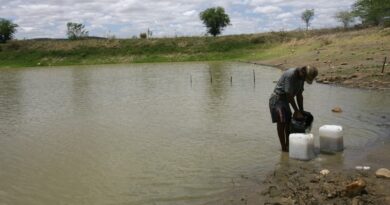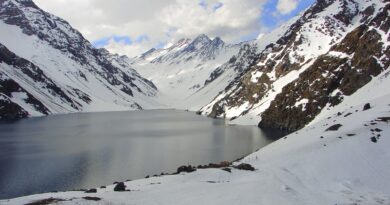Himalayan rivers must be lynchpin of India’s new water policy
A top expert summarises his views on the need to factor in the Himalayas in the new water policy
Jayanta Bandyopadhyay
As India prepares its new water policy, the importance of the rivers from the Himalayas cannot be overestimated.
The real origin of all rivers is the atmosphere. Precipitation pattern over river basins dictates the flow pattern of rivers. This vital link based on the provisioning ecosystem services of the atmosphere is hardly recognised in the reductionist mindset of traditional engineering. India’s new water policy has to recognise the need for deep scientific knowledge of the climate process in the Indian Himalayan Region (IHR).
The larger Himalayan region is known as the water tower of Asia. The IHR is a part of it, and also includes most parts of the north-eastern states and hill areas of West Bengal. The large rivers emerging from the IHR are the Ganga, Brahmaputra, Barak (in the Meghna basin) and Indus. These rivers are joined by many tributaries from the Himalayan region, especially from Bhutan and Nepal.
The Himalayan arc stands as a very tall (about 6,000 metres high) obstruction to the flows of the moisture-bearing atmospheric circulations, mainly the summer monsoon from June to September and the westerlies from November to February. This makes the Himalayas the climate maker of Asia and dictates the water endowment of these rivers.
The monsoon results in very high precipitation as rain; and the westerlies generate precipitation that comes from Central Asia, largely as snow. The larger Himalayan region is also known as The Third Pole, as it stores about 12,000 cu km of glaciers, largest after the two global poles. This makes the rivers emerging from the IHR perennial and their flows account for about two-thirds of the total river flows of India.
Food security and water supplies in north and east India depends on the IHR rivers. In 2018 the Niti Aayog (Indian government’s think tank) expressed serious concern about social and environmental damages of economic activities in the IHR and future demands on the IHR rivers. Integral links between groundwater and surface flows should be better recognised. Particular attention in relation to the IHR needs to be given to the possible use of aquifers in the foothill region, the Terai-Bhabar.
From the east to the west of the IHR, there is a downward gradient in total annual precipitation, dominated by rainfall, and from the west to the east, a gradient exists in the snowfall content in the precipitation. Thus, the rainfall content in the flows of Ganga and Brahmaputra is very high, while for Indus, about half of the flow originates in snow and glacier melts. The Barak is fully rain fed but its upper catchment is located at Cherrapungji, where the annual average precipitation is about 11,987 mm, according to Water Infrastructure for the Hindu Kush Himalayas, by David Molden and others in 2014.
In addition, the population pressure in each river system is different. The Ganga basin has the highest density of population among all river basins in the world with the majority living in poverty. Addressing poverty and pollution in the Ganga system has remained a big challenge for decades, needing a review and innovation in policy. Each IHR river basin has its characteristic ecological complexity, endowment and needs of water, creating diverse governance challenges.
The policy for the rivers of the IHR may be thought of with a two-tiered approach. First, as a framework policy for all the IHR river basins, while more specific policies and practices for individual basins are to be worked out within that framework.
Himalayan climate and uncertainty of flows
In spite of the great socio-economic use of the flows in the IHR rivers, their hydro-meteorological picture is far from being precisely known. While the monsoon and the westerlies generate the overall climate of the IHR, the steep slopes and rugged undulating Himalayan landscape generate a mosaic of micro climates all over the region, which impacts the local economies.
Understanding of the climate process in the IHR is handicapped by lack of dependable micro-level data, a characteristic problem of the whole Himalayan region. Bridging this knowledge gap is essential. Unfortunately, the assessment of the water flowing in the IHR river basins suffers from great uncertainty, as Richard Kattelmann pointed out in 1987 in Uncertainty in Assessing Himalayan Water Resources.
The uncertainty is increased by the impacts of global warming and climate change, as Molden and others pointed out in 2014. Thus, a policy for water in the rivers from the IHR has to start with the generation of better knowledge of the climate process and assessment of the water precipitated and flowing in the streams and rivers. The policy for the reduction of uncertainty in the assessment of water flowing in the IHR rivers in the era of global warming and climate change is clearly a priority.
The monsoon climate and the westerlies generate precipitation for limited periods of the year. In the Ganga, Brahmaputra and Barak systems, annual monsoon high flows are inevitable while very lean flows occur in the Indus prior to the spring and after autumn. Policies for such river systems need to be based on an interdisciplinary perspective and generate an integrated governance policy.
The existing policy is not supported by such an integrated knowledge base. As a starting point, flows in rivers are to be seen in a holistic manner, and the policy must recognise all constituents of flows beyond simple hydraulic quantities. Profile of rivers originating in the IHR has to be described not in simple quantity of volume of flow per unit time but as constituted by water (including its composition), energy content of flows, biodiversity and sediment budget (WEBS) in all parts of their basins, as I explained in this article in 2018. Together with the thematic integration, the three dimensional hydrological links of river flows – longitudinal, lateral and vertical – must be the basis of a new policy.
Upstream-downstream policy for IHR river basins
Interdisciplinary perception of river flows, like the WEBS, leads to ideas of governance of river basins and policy for managing upstream-downstream relations. The lengths of the Ganga and Brahmaputra rivers in India are quite substantial and call for deeper analysis of the flows linking the mountainous uplands and the floodplains.
In the case of the Ganga, the delta also becomes an important part in the upstream-downstream relations in which the understanding and assessment of the sediment regime become as important as those of water, as D.C. Goswami pointed out in 1985 in Brahmaputra river, Assam, India: Physiography, basin denudation and channel aggradation, published in Water Resources Research. Sampat Tandon and Rajiv Sinha pointed out the same in The Ganga River: A Summary View of a Large River of the Indian Sub-continent, in the 2018 publication The Indian Rivers edited by D.S. Singh.
The policy needs to treat the IHR as a large catchment with land use zones designed on the basis of water as a product, along with crops, fruits, timber, flowers, minerals etc. This leads to organised governance at the basin level. The existing reductionist policy does not address this aspect of governance of IHR river basins.
The result of the existing policy has been inter-state and social disputes like between Arunachal and Assam on hydropower projects, Bihar and West Bengal on sediments, or between Punjab and Haryana on irrigation.
One priority policy area that has emerged in the floodplains of IHR river basins is on the joint understanding of floods and sediment flows from the origin of tributaries to the end of the river basins.
Finally, there is a need to put good science based policy in the conservation of the riverine ecosystems and replace the unsound equation of ‘environmental flows’ as a small percentage of the total flow in the rivers.
Hence, a holistic analysis of the upstream-downstream relations in the IHR river basins is essential, for example in optimal land and water use planning for watersheds and payment for ecosystem services. Initiating basin level governance is a policy priority that has been mentioned in formal government documents, but not yet put in practice.
Water demand and infrastructure development policy for IHR
Rivers of the IHR serve a very large population and the Ganga system especially has a very high population density and poverty. The rivers belonging to the Indus system in India also provide irrigation water to large areas. Mega-cities and industrial areas like Kolkata, Patna, Kanpur, Agra, Delhi etc, depend on the IHR rivers and their demands are increasing.
Infrastructure for flood mitigation, irrigation, water supply and functioning of ecosystems will be an integral part of the interventions in the IHR river systems. Policy for the removal of pollution is equally important.
So far, engineering for building infrastructures has been based on the traditional reductionist perspective, which has enhanced supplies without making realistic compensations for their various social and environmental costs.
This gives an artificial boost to the benefit-cost ratio of projects as much as they generate popular demands for greater compensations. In turn, this alters the methodology for the assessment of environmental and social impact of projects.
In the IHR where the ecology is complex, and the natural environment is regularly subjected to earthquakes, extreme rainfall, floods, droughts, forest fires, landslides, glacial lake outburst floods etc. the policy for infrastructure development and assessment of their performance need to be fundamentally revisited based on a new scientific knowledge base and recognition of ecosystem services of the flows.
As MM Cernea pointed out in his 2007 article ‘Financing for Development’ in the Economic and Political Weekly, effective public participation and open availability of data is a prerequisite for proper policymaking. Policy push to research on developing ecologically and socially informed benefit-cost analysis is urgent.
The growth of urban/industrial areas in the IHR, especially at the foothills, has been very rapid in the past few decades. Together with big cities like Delhi, Kanpur etc. scarcity of water has also grown all over.
The message by Niti Aayog vice chair Rajiv Kumar for its 2018 publication ‘Contributing to Sustainable Development in the Indian Himalayan Region, A Summary Report’, makes it clear that the government’s think tank is very concerned about the emerging problem. Each river system needs to develop an interdisciplinary water budget for the coming decades. Managing urban/industrial growth with respect to water supplies and efficiency of use & discharge management have to become integral parts of any policy for the IHR river basins. The key for sustainability lies in interdisciplinary scientific knowledge for the IHR and its river basins.
{Jayanta Bandyopadhyay is Professor (Retired), IIM Calcutta and presently a Distinguished Fellow at Observer Research Foundation (India).}
(Source: Thethirdpole.net)



